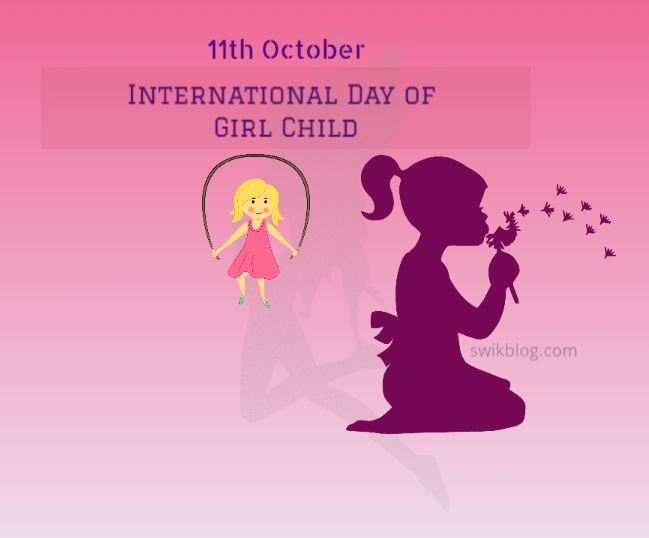International Day of Girl Child 11th October 2022 Theme- Our time is now—Our rights, Our Future
Every year 11th October is observed as the International Day of Girl Child, declared by the United Nations. The day is also known as the “Day of Girl and International Day of Girl”. The International Day of the Girl Child highlights the need to address the problems faced by our girls also to encourage the empowerment of girls and to achieve their human rights.
History
On 19 December 2011, the United Nations General Assembly proclaimed 11th of October as the International Day of Girls Child under the Resolution 66/170 for acknowledging the rights of girls and the particular challenges that girls face worldwide.
Adolescents have the right not only to a good, secure, well-educated life but also to a healthy life in these crucial years of education. Girls have the ability to change the world – as the empowerned children of today as well as employees of tomorrow, entrepreneurs, mentors, household leaders, policymakers and mothers – if successfully assisted in the teen years of adolescence. Investing in the power of young girls today upholds their rights and promises a fairer and flourishing future that is one where half of humanity is equal to address climate change challenges, political strife, economic development, disease prevention and global sustainability.
Theme of International Day of Girl Child 2022
This year the theme of International Day of Girl Child 2022 is – Our time is now—our rights, our future
Just as the world entered its second year of the COVID-19 pandemic, the Generation Equality Forum in 2021 made five-year commitments for bolder solutions to gender inequality. There are still 2.2 billion individuals in the world under the age of 25 who do not have access to the internet because of the pandemic’s escalation of digital platforms for studying, earning and connecting.
Girls are more prone than boys to be outcast. By 2019, the gender gap among internet users would be 17 percent higher than it was in 2013. It’s around 43% in the world’s poorest countries.
While connectivity is a factor in the gender digital divide, it’s not the only one. Using and owning digital devices, as well as gaining access to jobs and training in this field, are all less common among girls than between boys. We can’t have a digital revolution for everyone and with everyone until we address the unfairness and exclusion that cut across generations and continents.
Stereotypes and exclusion are challenging boundaries and barriers, particularly those for children with disabilities and those in disadvantaged groups. Girls build a world that will be important to them and to future generations as entrepreneurs, innovators and instigators of global movements.
Swikriti Dandotia




